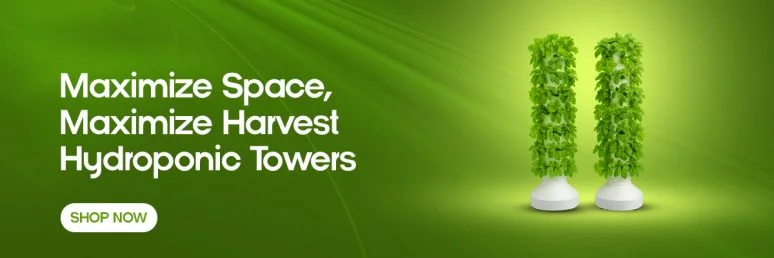Hydroponic vs. Soil Plants: Pros, Cons, and Key Differences

Key Takeaways
-
- Hydroponic systems can grow plants 30-50% faster than soil while using up to 95% less water, making them ideal for limited spaces and drought-prone regions.
- Soil-based growing offers lower startup costs, greater forgiveness for beginners, and provides a robust ecosystem of beneficial microorganisms that enhance plant health naturally.
- While hydroponics requires more technical knowledge and higher initial investment, it provides precise nutrient control and year-round growing capabilities regardless of outdoor conditions.
- Each growing method excels with different plants – leafy greens and herbs thrive in hydroponics, while deep-rooted vegetables and perennials generally prefer soil environments.
- ALTO Garden systems bridge the gap between hydroponic efficiency and traditional gardening, offering sustainable solutions for modern growers looking to maximize their harvests.
The age-old debate of hydroponic vs. soil growing comes down to one simple question: do you want roots in water or dirt? But the implications of that choice stretch far beyond where your plants stick their feet. I’ve spent years experimenting with both methods, and I can tell you firsthand that each approach offers distinct advantages for different gardening goals.
Why Choosing Between Hydroponics and Soil Growing Matters
“What Is Hydroponic Farming? How It …” from h2oglobalnews.com and used with no modifications.
Your growing method fundamentally shapes everything from your harvest timeline to your daily maintenance routine. Choosing between hydroponics and soil isn’t just a technical decision—it impacts your relationship with your plants. Some gardeners crave the precision and control of hydroponics, while others find deep satisfaction in the traditional connection with soil. ALTO Garden understands this balance, providing systems that honor both the efficiency of hydroponics and the natural wisdom of traditional growing methods.
The method you select will influence your space requirements, water usage, startup costs, and even which plants you can successfully grow. With climate change threatening traditional growing regions and urban gardening on the rise, understanding these differences has never been more important for both hobbyists and serious growers.
Hydroponic Growing: Water-Based Plant Magic
“Hydroponics | National Agricultural Library” from www.nal.usda.gov and used with no modifications.
Imagine plants suspended over water, their roots dangling into a nutrient-rich solution that delivers exactly what they need, when they need it. That’s the essence of hydroponics. No soil, no digging, just pure growing efficiency. Plants don’t actually need soil—they need what soil provides: water, nutrients, and structural support. Hydroponics simply delivers these essentials more directly. For a deeper dive into this method, check out this comparison of hydroponic vs. soil growing.
How Hydroponic Systems Actually Work
At its core, hydroponics works by bringing a precisely calibrated nutrient solution directly to plant roots. Without soil as a buffer, plants have immediate access to everything they need for growth, eliminating the energy typically spent searching for nutrients. The roots remain either partially or fully submerged in water, or regularly misted with nutrient solution, depending on the specific system design.
Most hydroponic setups include five essential components: a growing medium (like rock wool or clay pellets), nutrient solution reservoir, delivery system (pumps and tubes), growing containers, and some form of light source. Together, these elements create a controlled environment where plants can direct their energy toward vegetative growth and fruit production rather than extensive root development.
6 Popular Hydroponic Methods for Home Gardeners
- Deep Water Culture (DWC): Plants float on a nutrient solution with roots fully submerged, while air pumps provide oxygen
- Nutrient Film Technique (NFT): A shallow stream of nutrient solution flows over roots in channels
- Ebb and Flow: Growing medium is temporarily flooded with solution, then drained
- Drip System: Nutrient solution slowly drips onto plant roots
- Aeroponics: Roots hang in air and are misted with nutrient solution
- Wick System: Passive system where nutrients travel up wicks to the roots
Each method offers different advantages in terms of complexity, cost, and suitability for various plant types. Beginners often start with DWC or wick systems for their simplicity, while experienced growers might prefer the efficiency of NFT or aeroponics.
Nutrient Solutions: The Lifeblood of Hydroponic Plants
In hydroponics, the nutrient solution replaces soil as the source of all essential elements plants need to thrive. This solution typically contains primary macronutrients (nitrogen, phosphorus, potassium), secondary nutrients (calcium, magnesium, sulfur), and micronutrients (iron, manganese, zinc, and others). The beauty of hydroponics lies in the ability to adjust these nutrient profiles precisely for different growth stages or plant varieties.
Maintaining proper pH levels (typically between 5.5 and 6.5) is crucial, as it affects nutrient availability. Too high or too low, and certain nutrients become locked out, leading to deficiencies despite their presence in the solution. Regular monitoring with a pH meter and EC (electrical conductivity) meter becomes part of the routine for successful hydroponic gardeners.
“The difference between hydroponics and soil growing isn’t just technical—it’s philosophical. Hydroponics represents human innovation and precision, while soil represents our connection to ancient growing wisdom. Both have their place in modern gardening.” – Experienced Hydroponic Grower
Environmental Control in Hydroponic Gardens
One of hydroponics’ greatest advantages is the unprecedented control over growing conditions. Indoor hydroponic systems operate independently of weather, seasons, or local growing conditions. You can grow tropical plants in Alaska or desert herbs in rainy Seattle. Temperature, humidity, light cycles, and nutrient levels can all be adjusted to create ideal growing environments for specific plants.
This environmental control typically results in faster growth cycles and higher yields. Many hydroponic growers report harvesting lettuce in as little as 30 days from seed—about half the time required in soil. However, this control comes with responsibility. Without natural buffers, small mistakes in nutrient mixing or pH can quickly impact plant health.
Soil Growing: Nature’s Time-Tested Method
“Healthy Soil and How to Make It” from www.thespruce.com and used with no modifications.
Soil growing harnesses billions of years of natural evolution. When you sink your hands into rich garden soil, you’re connecting with the most ancient growing medium on Earth. While hydroponics might seem futuristic, soil gardening brings with it irreplaceable benefits that technology simply can’t replicate. The complex interactions between soil microorganisms, fungi networks, and plant roots create a living ecosystem that supports plant health in ways we’re still discovering.
The tactile experience of working with soil offers therapeutic benefits many gardeners cherish. There’s a certain satisfaction in preparing beds, working compost into tired soil, and watching your plants respond to your care with vibrant growth. This connection to the Earth represents one of the deepest values of traditional gardening that technological solutions sometimes miss.
The Living Ecosystem in Your Garden Soil
Healthy garden soil is far from inert—it’s teeming with billions of beneficial microorganisms. A single teaspoon can contain up to one billion bacteria, several yards of fungal filaments, thousands of protozoa, and dozens of nematodes. This microscopic community creates what scientists call the soil food web, a complex network that helps break down organic matter, cycle nutrients, prevent disease, and even communicate between plants.
Mycorrhizal fungi form particularly important partnerships with plant roots, effectively extending the root system and helping plants access water and nutrients far beyond their reach. These fungi can connect multiple plants together, creating what scientists now refer to as the “wood wide web” where resources and even information can be shared between plants. This natural network is something hydroponic systems simply cannot replicate.
How Plants Access Nutrients in Soil
In soil, nutrient availability follows nature’s rhythm. Organic matter breaks down gradually, releasing nutrients through the action of soil microbes, which creates a natural slow-release feeding system. Plants develop extensive root systems that actively search for these nutrients, growing stronger in the process. This relationship between roots and soil encourages resilience and adaptability in plants.
Soil acts as both pantry and buffer for plants. Its complex structure can hold onto nutrients that might otherwise wash away, releasing them slowly as plants need them. This buffering capacity makes soil growing more forgiving of mistakes—if you over-fertilize or miss a watering, the soil itself helps mitigate the damage. For beginners, this forgiveness is particularly valuable. For more insights, you can explore the hydroponic vs. soil growing comparison.
Different Soil Types and Their Best Uses
- Sandy soil: Fast-draining, warms quickly in spring, excellent for root vegetables and drought-tolerant plants
- Clay soil: Nutrient-rich, retains moisture well, good for late-season crops and plants that need consistent water
- Loam: The ideal garden soil with balanced properties, suitable for most garden plants
- Silt: Fertile and moisture-retentive, excellent for vegetable gardens when properly managed
- Chalky/alkaline soil: Good for plants requiring higher pH like brassicas and certain herbs
Growth Rate and Yields: Which Method Produces More?
“Water Affects Plant Growth” from swanhose.com and used with no modifications.
When comparing productivity, hydroponics typically delivers faster growth and higher yields per square foot. Plants in hydroponic systems can grow 30-50% faster than their soil counterparts and often produce significantly more harvest from the same space. This efficiency comes from the direct access to nutrients and perfect growing conditions maintained in hydroponic setups.
However, soil gardens offer their own productivity advantages. Their established ecosystems support long-term sustainability and often produce crops with more complex flavor profiles. Many commercial farms are now incorporating principles from both methods to maximize their production while maintaining quality.
The yield difference varies dramatically by crop type. Leafy greens and herbs show the most dramatic improvement in hydroponic systems, while deep-rooted vegetables and perennials may perform equally well or better in soil. Your choice should ultimately align with what you’re most interested in growing.
Why Hydroponic Plants Often Grow Faster
Hydroponic plants dedicate less energy to developing extensive root systems since nutrients come directly to them. This energy savings gets redirected to above-ground growth, resulting in faster maturation. In soil, plants must work harder to seek out water and nutrients, developing more complex root structures that take time and energy to build.
The controlled environment of hydroponics eliminates variables that typically slow growth in soil gardens. There’s no competition from weeds, no periods of drought or overwatering, and no nutrient depletion to navigate. Every environmental factor can be optimized for maximum growth rates, allowing plants to perform at their genetic potential.
Crop Yields: What to Expect from Each Method
Yield increases in hydroponics are most dramatic with fast-growing crops. Lettuce grown hydroponically can be harvested in 30-35 days versus 60+ days in soil. A well-managed hydroponic system can produce up to 10 times more lettuce in the same space as traditional gardening. Strawberries, herbs, and tomatoes also show remarkable productivity improvements when grown hydroponically.
Soil gardening excels with crops that benefit from the complex soil ecosystem. Root vegetables, perennial herbs, and many fruit trees develop better flavor profiles and more resilient growth when their roots can explore natural soil. The yield might be lower per square foot, but the quality advantages can make soil the superior choice for certain crops.
Taste and Nutrition: The Quality Showdown
The taste debate between hydroponic and soil-grown produce remains contentious among gardening enthusiasts. Blind taste tests have produced mixed results, with soil-grown produce often scoring higher for complex flavors, while hydroponic produce rates well for consistency and sweetness. The truth is that growing conditions, plant variety, and post-harvest handling influence taste more significantly than the growing method itself.
Nutritionally, research shows that properly managed hydroponic and soil gardens can produce equally nutritious food. The key factor isn’t the growing method but rather how recently the produce was harvested. Fresh-picked vegetables from either system will offer superior nutrition compared to store-bought alternatives that might have been harvested weeks earlier.
“The most nutritious vegetable is the one you’ll actually eat. Whether grown in high-tech hydroponics or humble backyard soil, homegrown produce harvested at peak ripeness delivers nutrition that store-bought simply can’t match.”
Space Requirements: Making the Most of Your Garden Area
“Hydroponics Gardening …” from www.bria.com.ph and used with no modifications.
Space utilization represents one of the most striking differences between these growing methods. Traditional soil gardens spread horizontally, requiring substantial ground space to produce meaningful harvests. Hydroponic systems, however, can be configured vertically to maximize production in limited areas, making them particularly valuable for urban growers or those with small yards.
The decision between methods often comes down to the space you have available. Limited to a small apartment balcony? Hydroponics might be your only viable option. Have a quarter-acre backyard? Soil gardening might better utilize that expansive horizontal space while providing other landscape benefits.
Vertical Possibilities with Hydroponics
Vertical hydroponic systems can produce up to 10 times more yield per square foot than traditional soil gardens. By stacking growing planes vertically, you can create a productive garden in remarkably small footprints—even a corner of a room. Tower gardens, wall-mounted systems, and A-frame configurations all maximize otherwise unused vertical space, making hydroponics the clear winner for space-restricted environments.
Commercial vertical farms have taken this concept to extraordinary heights, producing tons of food in warehouse environments by stacking growing systems floor-to-ceiling. Even home gardeners can benefit from this approach by using simple vertical hydroponic towers that occupy just a few square feet yet grow dozens of plants simultaneously. This space efficiency makes hydroponics particularly attractive for urban dwellers or those with limited outdoor space.
Space-Saving Techniques for Soil Gardens
Traditional soil gardening isn’t necessarily space-inefficient if you employ smart techniques. Raised beds allow for intensive planting methods like square foot gardening, where crops are planted much closer together than conventional rows. Trellising, arbors, and other vertical supports can help soil gardens grow upward, particularly for vining crops like cucumbers, beans, and squash.
Container gardening bridges the gap between traditional soil methods and space efficiency. Large pots, fabric grow bags, and even repurposed buckets can create productive gardens on patios, balconies, and driveways. While not as space-efficient as vertical hydroponics, these approaches significantly increase the production potential of small soil-based gardens.
For truly limited spaces, soil gardeners can utilize hanging baskets, wall planters, and tiered containers to create modest vertical growing spaces. While not as systematized as hydroponic vertical farms, these approaches can dramatically increase growing capacity in small yards or patios.
Water Usage: The Environmental Impact
“Water – Wikipedia” from en.wikipedia.org and used with no modifications.
Water conservation represents one of hydroponics’ most compelling advantages. Traditional soil gardening typically uses significantly more water, much of which is lost to evaporation, runoff, and drainage beyond the root zone. In drought-prone regions or areas with water restrictions, this difference can be the deciding factor between growing methods.
How Hydroponics Can Save Up to 90% Water
Recirculating hydroponic systems achieve remarkable water efficiency by continuously reusing the same nutrient solution. Plants take only what they need, and the remaining water returns to the reservoir rather than draining away into the soil. Studies consistently show water savings of 80-95% compared to conventional soil gardening—a staggering difference in resource consumption. A lettuce crop grown hydroponically might use just 1 gallon of water compared to 15-20 gallons for the same crop in soil.
This water efficiency results from eliminating evaporation from soil surfaces and preventing drainage beyond the root zone. In closed hydroponic systems, the only water that leaves the system is what transpires through the plants’ leaves or is taken up into the plant tissue itself. Even this transpired moisture can sometimes be recaptured in highly controlled indoor environments, further increasing efficiency.
Smart Watering for Soil Gardens
Soil gardens can significantly reduce their water footprint through mindful practices. Drip irrigation delivers water directly to plant roots, minimizing evaporation. Mulching soil surfaces with organic materials like straw, leaves, or wood chips dramatically reduces evaporation while gradually adding organic matter to the soil. Rain barrels and other water harvesting systems help soil gardeners leverage natural precipitation, reducing reliance on municipal water. For more insights, you can explore the pros and cons of soil growing.
Deep, infrequent watering encourages plants to develop extensive root systems that access moisture deeper in the soil profile, creating more drought-resistant gardens. While these approaches can’t match hydroponics’ water efficiency, they represent significant improvements over conventional irrigation methods and demonstrate soil gardening’s compatibility with water conservation goals.
Startup Costs and Ongoing Maintenance
“The Hydroponic Garden: An Indoor Garden …” from diydanielle.com and used with no modifications.
The financial aspects of each growing method often become significant decision factors for many gardeners. Generally, hydroponic systems require higher initial investments but can deliver faster returns through increased productivity. Soil gardens typically cost less to establish but may produce less intensively. Your budget, both for startup and ongoing maintenance, should align with your chosen method.
True Cost of Setting Up a Hydroponic System
Entry-level hydroponic systems for home gardeners typically start around $100-$300 for basic setups that can grow a few plants. More comprehensive systems capable of supporting dozens of plants may cost $500-$2,000 depending on size, automation features, and quality. DIY approaches using readily available materials can reduce these costs significantly, though they require more research and assembly time.
Beyond the system itself, hydroponics requires ongoing purchases of nutrients, growing media, pH adjusters, and potentially replacement parts for pumps and other components. Electricity costs for running pumps and artificial lighting (if used) add to the operational expenses. These costs typically range from $15-$50 monthly for hobby-scale systems.
Soil Garden Setup Expenses
Traditional soil gardens can be started for as little as $50-$100, covering basic tools, seeds, and some soil amendments. Raised beds represent a middle investment, typically costing $100-$300 per bed depending on materials and soil quality. While the startup costs are lower, soil gardens still require ongoing investments in compost, mulch, organic fertilizers, and occasional soil testing.
The beauty of soil gardening lies in its potential for self-sufficiency. Composting garden waste, collecting rainwater, and saving seeds can dramatically reduce ongoing expenses over time. Many soil gardeners gradually approach a closed-loop system where external inputs become minimal, resulting in very low long-term costs.
Monthly Operating Costs Compared
For small to medium home gardens, the monthly operating costs typically favor soil growing. A established soil garden might require just $10-$20 monthly during growing season for water, occasional fertilizer, and replacement seeds or plants. Comparable hydroponic systems generally run $30-$60 monthly when factoring in electricity, nutrients, and replacement supplies. The higher yields from hydroponics may offset these costs for those growing high-value crops, particularly in regions with short outdoor growing seasons.
Time Investment: Which Method Demands More Attention
The time requirements differ significantly between methods. Hydroponics demands consistent, frequent attention—daily monitoring of water levels, pH, and nutrient concentrations is often necessary. While individual tasks might be quick, the regularity can add up to significant time commitments of 30-60 minutes daily for medium-sized systems. Automated systems can reduce this time investment but add to the initial cost.
Soil gardens typically require more intense effort in bursts—spring preparation, periodic weeding sessions, occasional watering during dry spells—but can often be left unattended for days between maintenance sessions. Many gardeners find soil cultivation more physically demanding but less technically complicated than hydroponics. Your personal schedule and preference for consistent small tasks versus occasional larger efforts should influence your choice.
Pest and Disease Management
Every gardener eventually faces challenges from pests and diseases. The approaches to managing these issues differ dramatically between hydroponic and soil systems, with each offering distinct advantages in different situations.
Why Hydroponics Reduces Certain Pest Problems
Hydroponic gardens, particularly indoor systems, create controlled environments that exclude many common garden pests. Without soil, you eliminate entire categories of pests including soil-dwelling insects, nematodes, and certain types of root diseases. Indoor systems provide additional barriers against flying insects, rodents, and larger pests that routinely challenge outdoor gardens.
This reduced pest pressure often allows hydroponic growers to maintain completely organic or pesticide-free growing environments more easily than soil gardeners. Many commercial hydroponic operations successfully implement biological controls like beneficial insects rather than chemical interventions, resulting in cleaner produce with fewer residues. For a balanced pros and cons list of hydroponic growing, consider exploring further discussions and insights.
Common Hydroponic Diseases and Prevention
While hydroponics reduces many pest problems, water-borne diseases present unique challenges in these systems. Pythium (root rot), Fusarium, and other fungal pathogens can spread rapidly through shared water systems, potentially affecting entire crops simultaneously. Prevention focuses on maintaining proper oxygen levels in the nutrient solution, regular cleaning of system components, and maintaining appropriate water temperatures (typically below 70°F for most crops).
Sterilization becomes critically important in hydroponic systems. Many growers incorporate UV sterilizers, hydrogen peroxide treatments, or beneficial bacteria supplements to prevent pathogen buildup. The interconnected nature of most hydroponic systems means that problems can spread quickly, but also that preventative treatments can be applied systemically with minimal effort.
Natural Pest Control in Soil Gardens
Healthy soil gardens develop complex ecological balances that naturally suppress many pest and disease issues. Diverse plantings attract beneficial insects that prey on garden pests, while healthy soil biology helps plants develop natural resistance to diseases. Building this biological diversity takes time but creates robust, resilient growing systems that largely self-regulate.
Soil gardeners have access to numerous organic pest management techniques including companion planting, physical barriers, trap crops, and biological controls. These approaches work with natural systems rather than against them, creating gardens that become increasingly resistant to pest pressure over time. While requiring more ecological knowledge, these methods often result in more sustainable long-term solutions than chemical interventions.
Best Plants for Each Growing Method
“Create a Windowsill Herb Garden with …” from phsonline.org and used with no modifications.
Not all plants perform equally well in both systems. Understanding which crops excel in each environment helps you make informed decisions about what to grow.
Top 5 Plants That Thrive in Hydroponics
Leafy greens dominate hydroponic success stories, with lettuce, spinach, and kale growing faster and cleaner than their soil counterparts. These crops mature rapidly in hydroponic systems, often ready for harvest in half the time required in soil. Their shallow root systems adapt perfectly to most hydroponic methods, and their high market value makes them economically viable even for small-scale systems.
Beyond greens, herbs like basil, mint, and cilantro perform exceptionally well hydroponically, producing abundant aromatic foliage with intense flavor profiles. Fruiting crops including strawberries, tomatoes (particularly cherry varieties), and peppers also excel in well-designed hydroponic systems, though they require more space and often benefit from pollination assistance indoors. For beginners, I recommend starting with lettuce varieties, which forgive minor mistakes and provide harvests within weeks of planting.
Plants That Prefer Soil Growing
Root vegetables like carrots, potatoes, and onions generally perform better in soil environments. Their extensive root development requires depth and resistance that most hydroponic media cannot provide, and the energy required to create suitable hydroponic environments for these crops rarely justifies the results. Traditional soil gardens remain the preferred method for these staple vegetables.
Perennial plants including berry bushes, fruit trees, and many herbs establish long-term root systems that benefit from soil’s complex ecosystem. The mycorrhizal relationships these plants form with soil fungi contribute significantly to their health and productivity, relationships that cannot be replicated in hydroponic environments.
Large-vining plants such as winter squash, pumpkins, and watermelons, while technically possible to grow hydroponically, require such extensive space and support that soil cultivation usually proves more practical for home gardeners. Their sprawling growth habits and heavy fruits are more easily accommodated in traditional garden settings.
Crops That Work Well in Both Systems
Several versatile crops adapt well to either growing method, offering flexibility for gardeners transitioning between systems or utilizing hybrid approaches. Tomatoes, peppers, cucumbers, and beans perform admirably in both environments, though their growth habits and maintenance needs differ between systems. These adaptable plants make excellent choices for gardeners experimenting with new growing methods or maintaining both hydroponic and soil gardens simultaneously.
The Learning Curve: Which Method is Easier to Master
“How to Choose a DIY Hydroponic System” from www.thespruce.com and used with no modifications.
For most beginners, soil gardening presents a gentler learning curve with more room for error. Mother Nature has spent billions of years perfecting soil-based growing systems that forgive mistakes and self-correct many imbalances. Hydroponic systems require more technical understanding, regular monitoring, and precise adjustments to maintain optimal conditions. Your comfort with technology, availability for daily maintenance, and personal learning style should inform which path you choose initially.
First-Time Grower Success Rates
New soil gardeners typically experience success with at least some crops in their first season, even with minimal preparation or experience. The forgiving nature of soil buffers many common beginner mistakes like irregular watering or improper fertilization. Starting with easy-to-grow crops like zucchini, beans, or radishes almost guarantees some level of harvest, providing the positive reinforcement that keeps new gardeners engaged and learning.
Common Beginner Mistakes to Avoid
In hydroponics, the most frequent beginner errors include improper pH management, inadequate system cleaning, and over-complicating nutrient solutions. Starting with simple systems like deep water culture and easy crops like lettuce dramatically increases first-time success rates. For soil gardeners, overwatering, insufficient sunlight, and starting with challenging crops represent the most common pitfalls. In both cases, starting small, choosing appropriate plants, and being willing to learn from inevitable setbacks creates the foundation for long-term success.
Making Your Choice: The Right Growing Method for You
“Hydro vs Soil in Cannabis Cultivation …” from sensiseeds.com and used with no modifications.
The “best” growing method isn’t universal—it’s the one that aligns with your specific circumstances, goals, and gardening philosophy. Consider your available space, budget, time commitment, desired crops, and personal values when making this decision. Many successful gardeners eventually incorporate elements of both approaches, leveraging the strengths of each method for different crops or seasons.
Questions to Ask Before Deciding
Before investing in either system, honestly assess your gardening goals. Are you primarily focused on maximum production, flavor quality, organic methods, or connecting with natural processes? Do you enjoy technical precision and daily monitoring, or prefer more intuitive, occasional garden care? Is your primary constraint space, water, climate, or budget? Answering these questions candidly helps narrow your options to the methods most likely to deliver satisfaction and success in your specific situation.
Hybrid Approaches for the Best of Both Worlds
Many innovative gardeners combine elements from both growing philosophies. Semi-hydroponic methods like wicking beds use soil or coco coir as a growing medium while incorporating reservoir systems that reduce watering frequency. Self-watering containers provide similar benefits on a smaller scale, combining soil’s biological advantages with improved water efficiency.
Aquaponics represents perhaps the most elegant hybrid, integrating fish farming with hydroponic plant production in a symbiotic system where fish waste provides plant nutrients while plants filter water for the fish. These integrated approaches often capture the key advantages of both traditional and high-tech growing methods while minimizing their respective disadvantages.
Frequently Asked Questions
After years of working with both hydroponic and soil systems, I’ve found that certain questions consistently arise from gardeners considering their options. The following responses address the most common concerns I encounter from those weighing these different growing methods.
While some questions have straightforward answers, others depend heavily on your specific circumstances. I’ve tried to provide balanced perspectives that acknowledge the nuances of each situation rather than promoting a single “right” answer.
Can I switch plants from soil to hydroponics or vice versa?
Most plants can transition between systems, but the process requires care to avoid shock. When moving from soil to hydroponics, gently wash all soil from the roots and provide a recovery period in a mild nutrient solution. Some root damage is inevitable, so expect temporary wilting before new growth emerges. Not all plants justify this effort—crops with short remaining lifecycles or extensive root systems often struggle with the transition.
Moving from hydroponics to soil generally proves easier, as soil provides a more forgiving environment for transplants. Ensure the soil mixture offers good drainage while maintaining adequate moisture, and consider using rooting hormone to encourage new root development. Keep newly transplanted plants in shade for several days before gradually introducing them to direct sunlight.
Do hydroponic vegetables taste different than soil-grown ones?
“The flavor debate largely comes down to growing practices rather than the medium itself. Properly grown hydroponic tomatoes harvested at peak ripeness can easily outperform soil-grown tomatoes harvested prematurely, while heritage varieties grown in rich, living soil often develop complexity that standard hydroponic systems struggle to match.”
Blind taste tests show mixed results depending on crop type, variety, and growing practices. For leafy greens like lettuce and spinach, many tasters cannot reliably distinguish between hydroponic and soil-grown samples of the same variety. For flavor-complex crops like tomatoes and strawberries, soil-grown specimens often score higher for complexity and “traditional” flavor notes, while hydroponics sometimes produces cleaner, sweeter profiles.
The most significant factor affecting flavor is harvest timing. Any vegetable harvested at peak ripeness and consumed fresh will dramatically outperform the same variety harvested prematurely or stored for extended periods. Home gardeners using either method have a substantial advantage over commercial produce simply by consuming their harvest at optimal ripeness.
Interestingly, controlled studies examining nutritional content show minimal differences between properly grown hydroponic and soil crops. Vitamin and mineral content depends more on plant genetics, harvest timing, and post-harvest handling than on the growing medium itself.
How much electricity do hydroponic systems use?
Electricity consumption varies dramatically based on system design and supplemental lighting requirements. Simple passive systems like wick setups might use no electricity at all, while basic pump-driven systems typically consume 10-20 watts continuously—comparable to a small LED light bulb. This translates to roughly $1-3 monthly on most electric bills. More complex systems with multiple pumps, chillers, or controllers might use 50-100 watts, still a modest consumption level.
Lighting represents the major potential energy cost for indoor hydroponic gardens. Modern LED grow lights typically draw between 100-650 watts depending on coverage area and intensity, potentially adding $15-100 to monthly electricity costs when run 12+ hours daily. For growers using natural sunlight or supplementing only during winter months, this cost remains minimal or seasonal. Energy-efficient systems using the latest LED technology can produce impressive yields while keeping electricity costs reasonable.
Can I use organic nutrients in a hydroponic system?
Yes, organic hydroponic growing is entirely possible, though it requires different approaches than conventional hydroponic fertilizers. Organic nutrients like fish emulsion, seaweed extract, and compost teas can be used successfully, but they typically require additional filtration to prevent clogging pumps and emitters. Many organic hydroponic growers incorporate beneficial microbes that help break down complex organic compounds into forms more readily available to plants, creating living nutrient solutions that more closely mimic natural soil processes.
Is one method more sustainable than the other?
Sustainability comparisons depend heavily on specific implementation details and local conditions. Hydroponics offers clear advantages in water conservation, space efficiency, and reduced transportation needs when grown locally. These systems can operate without pesticides, eliminate agricultural runoff, and produce food in previously non-arable environments including urban centers and arid regions.
Soil gardening, when practiced using regenerative methods, builds soil carbon, supports biodiversity, and can operate with minimal external inputs. Traditional organic gardening often requires less embodied energy in equipment and can improve rather than consume natural resources over time.
The most sustainable approach often involves thoughtful integration of both methods—using hydroponics where its efficiency advantages are most needed and soil cultivation where it can regenerate landscapes and carbon sequestration. Rather than viewing these methods as competitors, consider them complementary tools in creating resilient, productive food systems.
Both hydroponic and soil growing have their place in modern sustainable gardening. Your specific circumstances, goals, and values will ultimately determine which approach—or combination of approaches—best serves your gardening journey. Remember that the best growing method is simply the one that keeps you engaged and producing food for years to come.
For innovative garden solutions that blend the precision of hydroponics with the wisdom of traditional growing, explore ALTO Garden’s range of sustainable growing systems designed for modern gardeners.

:max_bytes(150000):strip_icc()/healthy-soil-and-how-to-make-it-2539853-hero-fdf9b0280dca41cb8ae9614e6fc4a0b0.jpg)
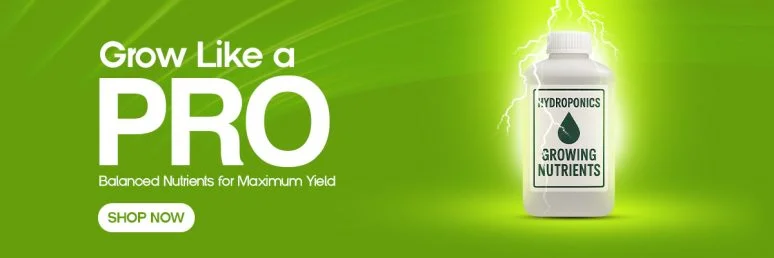

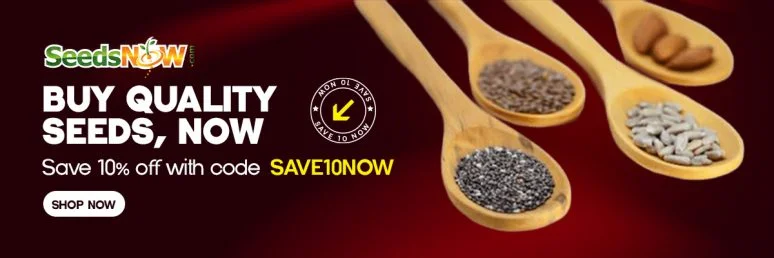
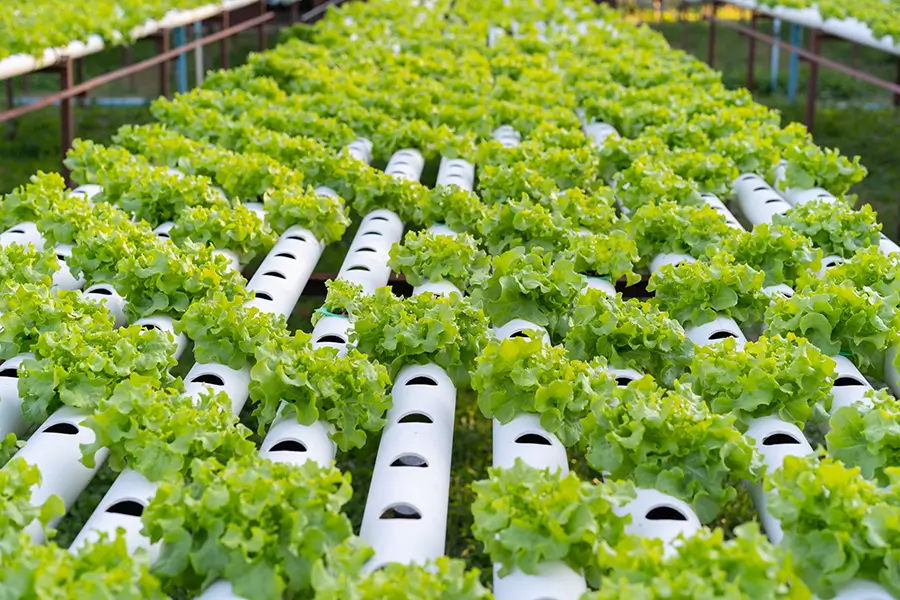


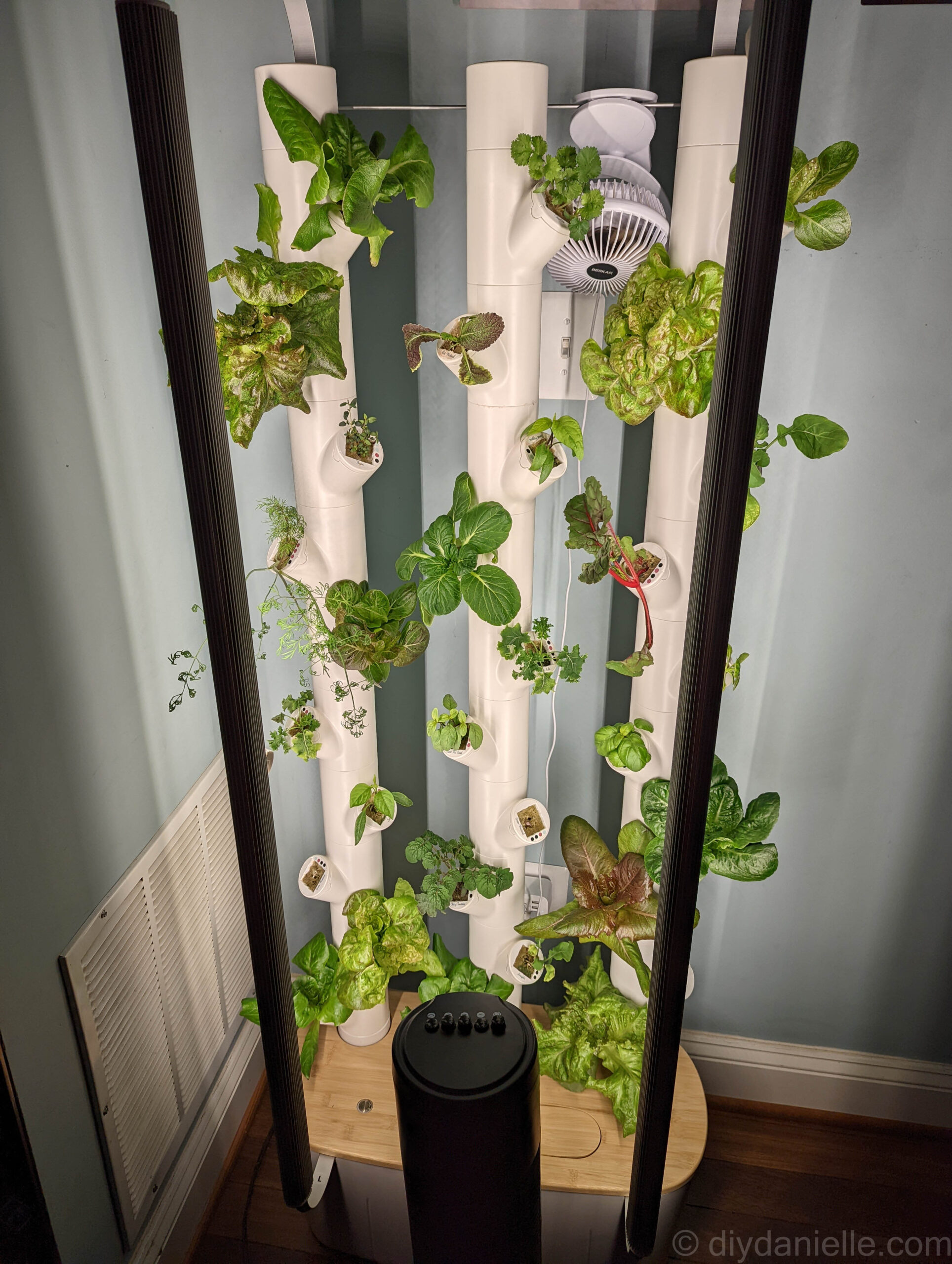
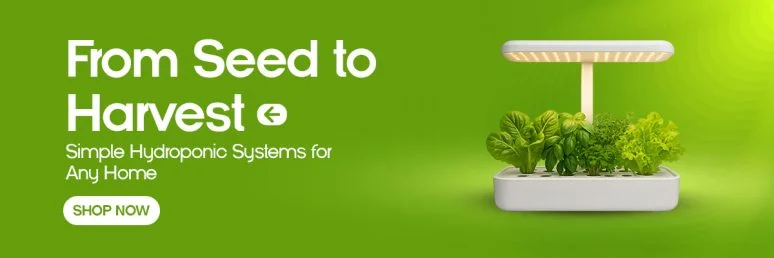

:max_bytes(150000):strip_icc()/diy-hydroponic-systems-5093454-hero-e47eb8c4d31146ea90b44c18b7345807.jpg)

